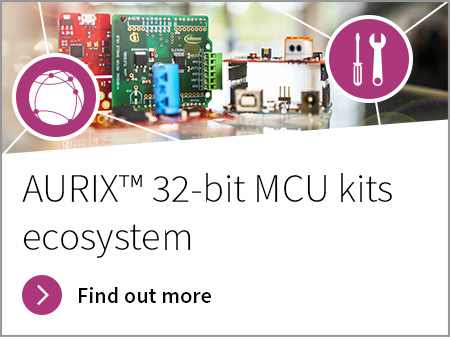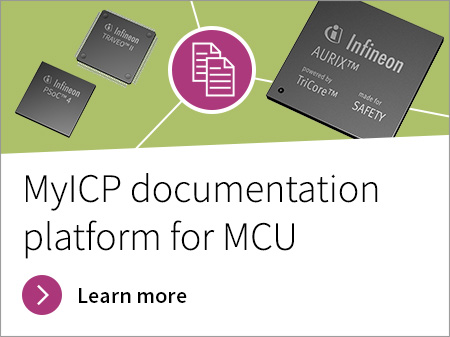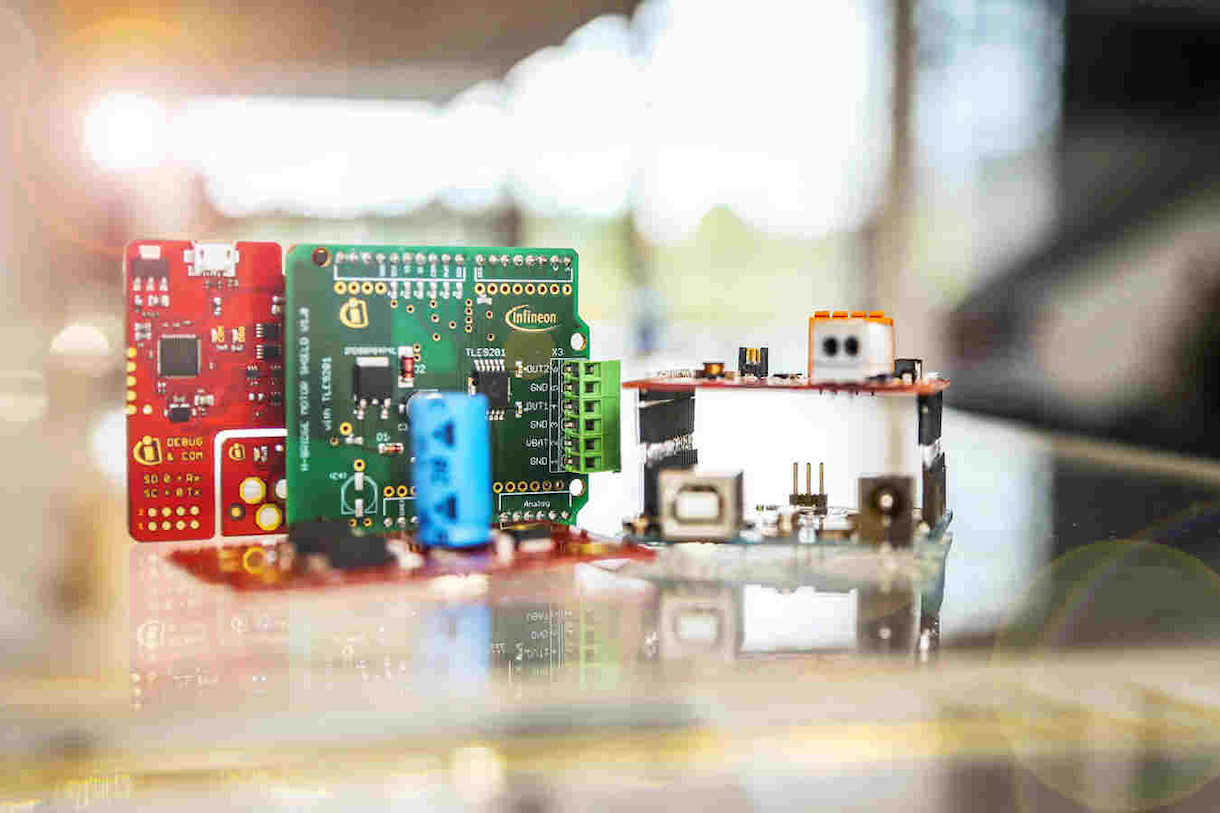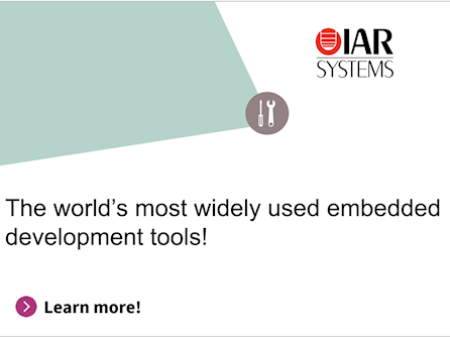Microcontroller
The ideal choice for applications where performance, connectivity, safety, and security are needed
Microcontroller subcategories
Collapse all subcategories Expand all subcategories- 32-bit AURIX™ TriCore™ Microcontroller
-
32-bit PSOC™ Arm® Cortex® microcontroller
- Overview
- 32-bit PSoC™ 4 Arm® Cortex®-M0/M0+
- Automotive PSOC™ 4: 32-bit Arm® Cortex®-M0/M0+ MCU
- 32-bit PSOC™ 4 HV Arm® Cortex®-M0+
- 32-bit PSOC™ 5 LP Arm® Cortex®-M3
- 32-bit PSoC™ 6 Arm® Cortex®-M4 / M0+
- 32-bit PSOC™ automotive multitouch Arm® Cortex®-M0
- 32-bit PSOC™ fingerprint Arm® Cortex®-M0+
- 32-bit PSoC™ Analog Coprocessor Arm® Cortex®-M0+ MCU
- 32-bit PSOC™ Edge Arm® Cortex® Multicore
- 32-bit PSOC™ Control Arm® Cortex®-M33 MCU
- 32-bit TRAVEO™ T2G Arm® Cortex® Microcontroller
- 32-bit XMC™ Industrial Microcontroller Arm® Cortex®-M
- Sensing controller
- MOTIX™ MCU | 32-bit motor control SoC (system-on-chip)
- Legacy Microcontroller
- Product Longevity
- Microcontroller Safety Products PRO-SIL™/ ISO26262
-
FM3 32-bit Arm® Cortex®-M3 Microcontroller (MCU) Families
- Overview
- FM3 CY9BFx1xS/T-Series Arm® Cortex®-M3 Microcontroller (MCU) Family
- FM3 CY9BFx1xN/R-Series High Performance Arm® Cortex®-M3 Microcontroller (MCU) Family
- FM3 CY9BFx2xJ-Series Arm® Cortex®-M3 Microcontroller (MCU) Family
- FM3 CY9BFx2xS/T-Series Arm® Cortex®-M3 Microcontroller (MCU) Family
- FM3 CY9BFx2xK/L/M-Series Arm® Cortex®-M3 Microcontroller (MCU) Family
- FM3 CY9AFx2xK/L-Series Low Power Arm® Cortex®-M3 Microcontroller (MCU) Family
- FM3 CY9AFx1xL/M/N-Series Low Power Arm® Cortex®-M3 Microcontroller (MCU) Family
- FM3 CY9AFx1xK-Series Low Power Arm® Cortex®-M3 Microcontroller (MCU) Family
- FM3 CY9AFx5xM/N/R-Series Low Power Arm® Cortex®-M3 Microcontroller (MCU) Family
- FM3 CY9AFx4xL/M/N-Series Low Power Arm® Cortex®-M3 Microcontroller (MCU) Family
- FM3 CY9AFxAxL/M/N-Series Ultra Low Leakage Arm® Cortex®-M3 Microcontroller (MCU) Family
- FM3 CY9AFx3xK/L-Series Ultra Low Leakage Arm® Cortex®-M3 Microcontroller (MCU) Family
-
FM4 32-bit Arm® Cortex®-M4 Microcontroller (MCU) Families
- Overview
- FM4 S6E2C High Performance Arm® Cortex®-M4 Microcontroller (MCU) Family
- FM4 S6E2G-Series Connectivity Arm® Cortex®-M4 Microcontroller (MCU) Family
- FM4 CY9BFx6xM/N/R-Series Motor Control Arm® Cortex®-M4 Microcontroller (MCU) Family
- FM4 S6E2H-Series Motor Control Arm® Cortex®-M4 Microcontroller (MCU) Family
- FM4 CY9BFx6xK/L-Series Motor Control Arm® Cortex®-M4 Microcontroller (MCU) Family
- FM0+ 32-bit Arm® Cortex®-M0+ Microcontroller (MCU) Families
A microcontroller unit (MCU) contains a CPU, memory, and input/output peripherals on a single integrated circuit (IC) chip and works as a standalone small computer. This allows for a reduction in power consumption, more compact designs, and cost savings. Additionally, microcontrollers can provide functional safety and security for embedded systems.
Increasingly, it is becoming critical that microcontrollers are equipped with advanced security features to avoid security compromises and prevent malware attacks. For this reason, the new generation of 32-bit MCUs provides robust protection for a range of embedded system applications
Infineon microcontroller portfolio
The Infineon microcontroller portfolio offers a comprehensive product range that includes state-of-the-art 32-bit microcontrollers that offer strong performance and future proven security solutions, along with traditional 8- and 16-bit microcontrollers. Our 32-bit MCU product portfolio includes XMC™, TRAVEO™ T2G, PSoC™, Auto PSoC™, FM™ and MOTIX™ 32-bit motor control SoC (System-on-Chip) which are based on Arm® Cortex®-M technology, as well as AURIX™ which uses TriCore™ technology. Infineon’s broad portfolio of microcontrollers offers scalable and high-performance solutions for a range of applications for automotive, industrial and consumer markets.
Microcontroller portfolio overview
As one of the largest semiconductor suppliers, Infineon has been active in microcontroller development for many years. Our AURIX™ Family of 32-bit high power microcontrollers offer the most advanced embedded safety and security features for the automotive industry and meet the highest automotive safety integrity level (ASIL) D classification. Infineon’s ASIL D microcontrollers are scalable and offer high performance and computation power with up to 300 MHz CPU and are available with high security module (HSM) enabled devices. Our portfolio of AURIX™ microcontrollers with HSM offer enhanced security and powerful safety architecture that support applications for the next levels of autonomous driving by providing a secure computing platform
The AURIX™ microcontroller is automotive qualified and is designed to meet the needs of the most demanding embedded control systems applications where the competing issues of price/performance, real-time responsiveness, computational power, data bandwidth, and power consumption are key design elements.
The Auto PSoC™ - Programmable System on Chip, integrate Infineon best-in-class capacitive sensing technology for demanding Human Machine Interface (HMI) applications in the automotive interior as well as exterior applications like Battery Management Systems (BMS) along with an ARM Cortex-M0/M0+ CPU, flash and memory. A programmable analog front-end with ADC, operational amplifiers, low-power comparators combined with digital blocks and various communication interfaces such as SENT, LIN, CAN and CAN FD provide a single-chip smart sensor with high integration and small footprint. Extended development ecosystem has been build around Auto PSoC including multiple software compatibility and the famous PSoC Creator software, easy-to-use IDE that introduces a game-changing schematic entry design methodology.
The XMC™ microcontroller family is based on Arm® Cortex®-M cores. It is dedicated to applications in the segments of power conversion, factory and building automation, transportation, and home appliances. XMC1000 bring together the Arm® Cortex®-M0 core and market-proven and differentiating peripherals in a leading-edge 65 nm manufacturing process. XMC4000 are powered by Arm® Cortex®-M4 with a built-in DSP instruction set.
The XMC™ portfolio of MCUs is ideal for a broad range of industrial and consumer applications, offering optimal power, performance capabilities, and reduce costs all while providing greater design flexibility.
TRAVEO™ T2G for automotive body electronics applications offers cutting-edge performance, safety, and security features. The TRAVEO™ T2G family is designed for transportation of the future. With processing power and network connectivity built into a single Arm® Cortex®- M4F and dual Cortex®- M7F, this family of microcontrollers has enhanced performance up to 1500 DMIPS in Traveo™ T2G. This family also provides the scalability across memory size and pin count. The IP compatibility enables customers to design and develop their system with a single-platform MCU solution. Traveo™ T2G devices have advanced security features with the introduction of HSM (Hardware security module), dedicated Cortex®-M0+ for secure processing, and embedded flash in dual bank mode for (Firmware-Over-The-AIR updates (FOTA) requirements. Traveo™ T2G features six power modes that enable ECUs to minimize overall power consumption. Traveo™ T2G come with optimized software platform that is available for AUTOSAR MCAL (Microcontroller Abstraction Layer), self-test libraries, Flash EEPROM emulation, as well as security low level drivers, combined with third-party firmware
MOTIX™ 32-bit motor control SoC solutions integrate on a single die the 32-bit microcontroller, the non-volatile flash memory, the analog and mixed signal peripherals, the communication interfaces along with the driving stages needed for either relay, half-bridge or full-bridge DC and BLDC motor applications. Our System-on-Chip (SoC) solutions enable PCB space saving, reduce cost through minimum number of external components, and enable multiple and flexible designs. They can be used for a range of motor control applications such as window lift, sunroof, wiper, auxiliary pumps, HVAC fans, and engine cooling fans. Our Embedded Power ICs are automotive qualified.
PSoC™ 4 has tackled some of the complex portions of embedded system design making it easier for you to get your product to market. Functions such as analog sensor integration, capactitive touch, and wireless connectivity have been integrated with an ARM Cortex-M0/M0+ CPU, flash and memory. Achieve ultimate flexibility in your design with software-defined peripherals embedded in the PSoC 4 architecture. Configure these peripherals using pre-built library functions or create your own using the programmable architecture inside of PSoC 4 devices: Capacitive Sensing, Programmable Analog Blocks, Programmable Digital Blocks and Wired and Wireless Connectivity. PSoC Creator software is a state-of-the-art, easy-to-use IDE that introduces a game-changing schematic entry design methodology. With PSoC Creator, designers can drag and drop components into their design as well as easily configure those components using intuitive configuration tools.
The PSoC™ 6 family is built on an ultra-low-power architecture, and the MCUs feature low-power design techniques to extend battery life up to a full week for battery powered applications. The dual-core Arm® Cortex®-M4 and Cortex-M0+ architecture lets designers optimize for power and performance simultaneously. Using its dual cores combined with configurable memory and peripheral protection units, the PSoC 6 MCU delivers the highest level of protection defined by the Platform Security Architecture (PSA) from Arm. Designers can use the MCU’s rich analog and digital peripherals to create custom analog front-ends (AFEs) or digital interfaces for innovative system components such as MEMS sensors, electronic-ink displays. The PSoC 6 MCU features the latest generation of industry-leading CapSense® capacitive-sensing technology, enabling modern touch and gesture-based interfaces that are robust and reliable. PSoC 6 MCU, paired with Infineon’s AIROC™ Wi-Fi, AIROC™ Bluetooth, or AIROC™ combos radio modules, is the perfect solution for secure, low-power, feature-rich IoT products.
FM4™ general-purpose, high performance microcontrollers based on the Arm® Cortex®-M4 processor with FPU and DSP functionality. operate at frequencies up to 200 MHz and support a diverse set of on-chip peripherals for motor control, factory automation and home appliance applications. The portfolio delivers low-latency, reliable, machine-to-machine (M2M) communication required for Industry 4.0 - the fourth industrial revolution, using network-computing technologies to advance design and manufacturing.
FM3™ is a portfolio of 32-bit, general-purpose and highly-integrated MCU's based on the Arm® Cortex®-M3 processor up to 144 MHz and operating voltages ranging from 1.65V to 5.5V. The devices incorporate up to 1.5 MB of flash and up to 192 KB RAM. All products are software-compatible because of their common SoC design with the same peripherals and CPU architecture. Users can select from different CPU speeds, memory size, supply voltage and package options.
The FM0+ portfolio of Flexible Microcontrollers and highly-integrated are based on 32-bit Arm ® Cortex®-M0+. This portfolio of MCUs is designed for ultra-low-power and cost-sensitive applications such as white goods, sensors, meters, HMI systems, power tools and Internet of Things (IoT) battery-powered or wearable devices. These microcontrollers can be easily embedded into systems, accelerating product development and reducing development costs.
Infineon’s automotive microcontrollers offer excellent safety and security features. Our range of 32-bit automotive microcontrollers offer efficient processing and high performance. Infineon’s microcontrollers for the automotive industry are used in many automotive applications from airbag systems, brake systems, electric power steering and many more applications. Our 32-bit microcontroller boards with embedded Hardware Security Module (HSM) offer cost-efficient solutions for typical automotive security applications. Using 32-bit microcontroller programming allows engineers to design automotive software that meets all functional safety requirements.
Infineon’s extensive portfolio of microcontrollers are designed for a wide range of industrial & IoT applications as well. When it comes to 32-bit microcontroller applications, the XMC™, PSoC™ and FM™ microcontrollers are used in wireless charging solutions, power tools, automatic opening systems, and 3D printer solutions as well as smart street lighting, factory and building automation, power conversion applications, and more.
Access to additional technical documentation:
By registering for myInfineon Collaboration Platform you can get access to additional add-on technical documentation, trainings, tools, and much more. Please follow these steps in order to get started:
- Register for myInfineon
- For AURIX documentation please send email to AURIX@infineon.com
- For Traveo documentation please email to Traveo@infineon.com
- For PSoC documentation please email to autopsoc@infineon.com
- You will receive a confirmation which explains how to use your new access
| AURIX™ | ||
| Preferred Design Houses | Tools partners | Software Partners |
| PSoC™ 4 |
| Preferred Design Houses |
| Device Programmer System Partners for PSoC™ 4 |
| Blue Clover Devices, DTS Insight, Elnec, Elprotronic, Hi-Lo Systems, LIERDA, PEmicro, Phyton Inc., RPM Systems, Sinaen, SMH Technologies, TPfusion, Xeltek |
| Device Programmer System Partners for PSoC™ Automotive Multitouch |
| Hi-Lo Systems Phyton Inc., RPM Systems, Sinaen, SMH Technologies, System General, TPfusion, Xeltek |
| TRAVEO™ II |
| Preferred Design Houses |
| XMC™ | ||
| Preferred Design Houses | Tools partners | Software partners |
| Embedded Power ICs | ||
| Preferred Design Houses | Tools partners | Software partners |
- AURIX™ System Control Units
- AURIX™ Peripheral Sensor Interface with Serial PHY
- AURIX™ Peripheral Sensor Interface
- AURIX™ Versatile Analog-to-Digital Converter
- AURIX™ System Timer
- AURIX™ System Architecture
- AURIX™ Single Edge Nibble Transmission
- AURIX™ Safety Management Unit
- AURIX™ Safety Concept
- AURIX™ Queued Synchronous Peripheral Interface
- AURIX™ Program Memory Unit
- AURIX™ Micro Second Channel
- AURIX™ Memory Test Unit
- AURIX™ Memory Maps
- AURIX™ Interrupt Router
- AURIX™ Inter-Integrated Circuit Module
- AURIX™ Input Output Monitor
- AURIX™ Infineon Low Level Driver
- AURIX™ High Speed Serial Link
- AURIX™ Hardware Security Module
- AURIX™ Generic Timer Module
- AURIX™ General Purpose Timer Unit
- AURIX™ General Purpose Input Output
- AURIX™ FlexRay™ Protocol Controller
- AURIX™ Flexible CRC Engine
- AURIX™ External Bus Unit
- AURIX™ Ethernet MAC
- AURIX™ Direct Memory Access
- AURIX™ Delta-Sigma Analog-to-Digital Converter
- AURIX™ Debug Support
- AURIX™ Controller Area Network
- AURIX™ Central Processing Unit
- AURIX™ Capture Compare Unit 6
- AURIX™ Advanced Driver Assistance Subsystem (ADAS)
- AURIX™ Asynchronous Synchronous Interface
- ADC_Background_Scan_1_KIT_TC275_LK
- ADC_Background_Scan_1_KIT_TC297_TFT
- ASCLIN_LIN_Master_1_KIT_TC297_TFT
- ADC_Filtering_1_KIT_TC275_LK
- ADC_Filtering_1_KIT_TC297_TFT
- ADC_Group_Scan_1_KIT_TC275_LK
- ADC_Group_Scan_1_KIT_TC297_TFT
- ADC_Queued_Scan_1_KIT_TC275_LK
- ADC_Queued_Scan_1_KIT_TC297_TFT
- ADC_Single_Channel_1_KIT_TC275_LK
- ADC_Single_Channel_1_KIT_TC297_TFT
- ASCLIN_LIN_Master_1_KIT_TC275_LK
- ASCLIN_LIN_Master_1_KIT_TC297_TFT
- ASCLIN_Shell_UART_1_KIT_TC237_TFT
- ASCLIN_Shell_UART_1_KIT_TC275_LK
- ASCLIN_Shell_UART_1_KIT_TC275_SB
- ASCLIN_Shell_UART_1_KIT_TC277_TFT
- ASCLIN_Shell_UART_1_KIT_TC297_TFT
- ASCLIN_SPI_Master_1_KIT_TC297_TFT
- ASCLIN_SPI_Master_1_KIT_TC275_LK
- ASCLIN_UART_1_KIT_TC297_TFT
- ASCLIN_UART_1_KIT_TC275_LK-TR
- Assembly_C_Code_1_KIT_TC297_TFT
- Assembly_C_Code_1_KIT_TC275_LK
- Blinky_LED_1_KIT_TC234_TFT
- Blinky_LED_1_KIT_TC237_TFT
- Blinky_LED_1_KIT_TC265_TFT
- Blinky_LED_1_KIT_TC275_LK
- Blinky_LED_1_KIT_TC275_SB
- Blinky_LED_1_KIT_TC277_TFT
- Blinky_LED_1_KIT_TC297_TFT
- BUS_Register_Protection_1_KIT_TC275_LK
- BUS_Register_Protection_1_KIT_TC297_TFT
- CCU6_ADC_1_KIT_TC275_LK
- CCU6_ADC_1_KIT_TC297_TFT
- CCU6_Interrupt_1_KIT_TC275_LK
- CCU6_Interrupt_1_KIT_TC297_TFT
- CCU6_PWM_Capture_1_KIT_TC275_LK
- CCU6_PWM_Capture_1_KIT_TC297_TFT
- CCU6_PWM_Generation_1_KIT_TC275_LK
- CCU6_PWM_Generation_1_KIT_TC297_TFT
- CPU_Perf_Counters_1_KIT_TC275_LK-TR
- CPU_Perf_Counters_1_KIT_TC297_TFT
- CPU_Trap_Recognition_1_KIT_TC275_LK-TR
- CPU_Trap_Recognition_1_KIT_TC297_TFT
- DMA_ADC_Transfer_1_KIT_TC275_LK-TR
- DMA_ADC_Transfer_1_KIT_TC297_TFT
- DMA_Linked_List_Mode_1_KIT_TC275_LK-TR
- DMA_Linked_List_Mode_1_KIT_TC297_TFT
- DMA_Mem_to_Mem_1_KIT_TC275_LK-TR
- DMA_Mem_to_Mem_1_KIT_TC297_TFT
- DSADC_1_KIT_TC275_LK-TR
- DSADC_1_KIT_TC297_TFT
- ERU_Interrupt_1_KIT_TC275_LK-TR
- ERU_Interrupt_1_KIT_TC297_TFT
- FCE_CRC_1_KIT_TC275_LK-TR
- FCE_CRC_1_KIT_TC297_TFT
- Flash_Programming_1_KIT_TC275_LK-TR
- Flash_Programming_1_KIT_TC297_TFT
- GPIO_LED_Button_1_KIT_TC275_LK-TR
- GPIO_LED_Button_1_KIT_TC297_TFT
- GPT12_PWM_Capture_1_KIT_TC275_LK-TR
- GPT12_PWM_Capture_1_KIT_TC297_TFT
- GPT12_PWM_Generation_1_KIT_TC275_LK-TR
- GPT12_PWM_Generation_1_KIT_TC297_TFT
- GPT12_Timer_Concatenation_1_KIT_TC275_LK-TR
- GPT12_Timer_Concatenation_1_KIT_TC297_TFT
- GPT12_Timer_Interrupt_1_KIT_TC275_LK-TR
- GPT12_Timer_Interrupt_1_KIT_TC297_TFT
- GTM_ATOM_Interrupt_1_KIT_TC275_LK-TR
- GTM_ATOM_Interrupt_1_KIT_TC297_TFT
- GTM_ATOM_PWM_1_KIT_TC275_LK-TR
- GTM_ATOM_PWM_1_KIT_TC297_TFT
- GTM_TIM_Capture_1_KIT_TC275_LK-TR
- GTM_TIM_Capture_1_KIT_TC297_TFT
- GTM_TOM_Interrupt_1_KIT_TC275_LK-TR
- GTM_TOM_Interrupt_1_KIT_TC297_TFT
- GTM_TOM_PWM_1_KIT_TC234_TFT
- GTM_TOM_PWM_1_KIT_TC237_TFT
- GTM_TOM_PWM_1_KIT_TC265_TFT
- GTM_TOM_PWM_1_KIT_TC275_LK
- GTM_TOM_PWM_1_KIT_TC275_SB
- GTM_TOM_PWM_1_KIT_TC275_SB
- GTM_TOM_PWM_1_KIT_TC277_TFT
- GTM_TOM_PWM_1_KIT_TC297_TFT
- I2C_Read_Ext_Device_1_KIT_TC297_TFT
- Interrupt_Prio_1_KIT_TC275_LK-TR
- Interrupt_Prio_1_KIT_TC297_TFT
- IOM_PWM_Monitor_1_KIT_TC275_LK-TR
- IOM_PWM_Monitor_1_KIT_TC297_TFT
- IOM_Signals_Comparison_1_KIT_TC275_LK-TR
- IOM_Signals_Comparison_1_KIT_TC297_TFT
- Memory_Access_Performance_1_KIT_TC275_LK-TR
- Memory_Access_Performance_1_KIT_TC297_TFT
- MPU_Memory_Protection_1_KIT_TC275_LK-TR
- MPU_Memory_Protection_1_KIT_TC297_TFT
- MTU_MBIST_1_KIT_TC275_LK-TR
- MTU_MBIST_1_KIT_TC334_LK
- MTU_MBIST_1_KIT_TC297_TFT
- MULTICAN_1_KIT_TC275_LK-TR
- MULTICAN_1_KIT_TC297_TFT
- MULTICAN_FD_1_KIT_TC275_LK-TR
- MULTICAN_FD_1_KIT_TC297_TFT
- MULTICAN_GW_TX_FIFO_1_KIT_TC275_LK-TR
- MULTICAN_GW_TX_FIFO_1_KIT_TC297_TFT
- MULTICAN_RX_FIFO_1_KIT_TC275_LK-TR
- MULTICAN_RX_FIFO_1_KIT_TC297_TFT
- Multicore_1_KIT_TC275_LK
- Multicore_1_KIT_TC275_SB
- Multicore_1_KIT_TC297_TFT
- OneEye_DAS_Oscilloscope_1_KIT_TC234_TFT
- OneEye_DAS_Oscilloscope_1_KIT_TC237_TFT
- OneEye_DAS_Oscilloscope_1_KIT_TC265_TFT
- OneEye_DAS_Oscilloscope_1_KIT_TC275_SB
- OneEye_DAS_Oscilloscope_1_KIT_TC275_LK
- OneEye_DAS_Oscilloscope_1_KIT_TC277_TFT
- OneEye_DAS_Oscilloscope_1_KIT_TC297_TFT
- PWM_Buzzer_1_KIT_TC297_TFT
- OneEye_DAS_Quickstart_1_KIT_TC275_LK
- OneEye_DAS_Quickstart_1_KIT_TC297_TFT
- OneEye_DAS_Shell_1_KIT_TC275_LK
- OneEye_DAS_Shell_1_KIT_TC297_TFT
- OneEye_UART_Mux_1_KIT_TC275_LK
- OneEye_UART_Mux_1_KIT_TC297_TFT
- OneEye_UART_Oscilloscope_1_KIT_TC275_LK
- OneEye_UART_Oscilloscope_1_KIT_TC297_TFT
- OneEye_UART_Shell_1_KIT_TC275_LK
- OneEye_UART_Shell_1_KIT_TC297_TFT
- RAM_Run_Function_1_KIT_TC275_LK-TR
- RAM_Run_Function_1_KIT_TC297_TFT
- SCU_Clock_1_KIT_TC275_LK-TR
- SCU_Clock_1_KIT_TC297_TFT
- SCU_Die_Temp_Sensor_1_KIT_TC275_LK-TR
- SCU_Die_Temp_Sensor_1_KIT_TC297_TFT
- SCU_Emergency_Stop_1_KIT_TC275_LK-TR
- SCU_Emergency_Stop_1_KIT_TC297_TFT
- SCU_Power_Down_Idle_1_KIT_TC275_LK-TR
- SCU_Power_Down_Idle_1_KIT_TC297_TFT
- SCU_Power_Down_Sleep_1_KIT_TC275_LK-TR
- SCU_Power_Down_Sleep_1_KIT_TC297_TFT
- SCU_Power_Down_Standby_1_KIT_TC275_LK-TR
- SCU_Power_Down_Standby_1_KIT_TC297_TFT
- SCU_Reset_Detection_1_KIT_TC275_LK-TR
- SCU_Reset_Detection_1_KIT_TC297_TFT
- SMU_Emergency_Stop_Alarm_1_KIT_TC275_LK-TR
- SMU_Emergency_Stop_Alarm_1_KIT_TC297_TFT
- SMU_Fault_Signaling_1_KIT_TC275_LK-TR
- SMU_Fault_Signaling_1_KIT_TC297_TFT
- SMU_Reset_Alarm_1_KIT_TC275_LK-TR
- SMU_Reset_Alarm_1_KIT_TC297_TFT
- SPI_CPU_1_KIT_TC275_LK-TR
- SPI_CPU_1_KIT_TC297_TFT
- SPI_DMA_1_KIT_TC275_LK-TR
- SPI_DMA_1_KIT_TC297_TFT
- STM_Interrupt_1_KIT_TC237_TFT
- STM_Interrupt_1_KIT_TC275_LK
- STM_Interrupt_1_KIT_TC275_SB
- STM_Interrupt_1_KIT_TC277_TFT
- STM_Interrupt_1_KIT_TC297_TFT
- STM_System_Time_1_KIT_TC275_LK-TR
- STM_System_Time_1_KIT_TC297_TFT
- UART_DMA_Transfer_1_KIT_TC275_LK-TR
- UART_DMA_Transfer_1_KIT_TC297_TFT
- UART_VCOM_1_KIT_TC275_LK
- UART_VCOM_1_KIT_TC297_TFT
- Watchdog_1_KIT_TC275_LK-TR
- Watchdog_1_KIT_TC297_TFT
- SMU_IR_Alarm_1_KIT_TC275_LK-TR
- SMU_IR_Alarm_1_KIT_TC297_TFT
- STM_Interrupt_1_KIT_TC265_TFT
- STM_Interrupt_1_KIT_TC234_TFT
- AURIX™ Asynchronous Synchronous Interface
- AURIX™ Capture Compare Unit 6
- AURIX™ Central Processing Unit
- AURIX™ Debug Support
- AURIX™ Direct Memory Access
- AURIX™ Enhanced Delta-Sigma Analog-to-Digital Converter
- AURIX™ FlexRay Protocol Controller
- AURIX™ General Purpose Input Output
- AURIX™ General Purpose Timer Unit
- AURIX™ Infineon Low-Level Driver
- AURIX™ Input-Output Monitor
- AURIX™ Inter-Integrated Circuit Module
- AURIX™ Interrupt Router
- AURIX™ Memory Maps
- AURIX™ Memory Test Unit
- AURIX™ Micro Second Channel
- AURIX™ Peripheral Sensor Interface
- AURIX™ Peripheral Sensor Interface with Serial PHY
- AURIX™ Queued Synchronous Peripheral Interface
- AURIX™ Radar Interface
- AURIX™ Single Edge Nibble Transmission
- AURIX™ System Architecture
- AURIX™ System Timer
- AURIX™ CAN Interface
- AURIX™ Clocking System
- AURIX™ Converter Control Block
- AURIX ™ Enhanced Versatile Analog-to-Digital Converter
- AURIX™ External Bus Unit
- AURIX™ Flexible CRC Engine
- AURIX™ Generic Timer Module
- AURIX™ Gigabit Ethernet MAC
- AURIX™ Hardware Security Module
- AURIX™ System Control Units
- AURIX™ Safety Management Unit
- AURIX™ High Speed Serial Link
- AURIX™ Safety Concept
- AURIX™ Non Volatile Memory Subsystem
- AURIX™ 8-bit Standby Controller
- AURIX™ Camera and ADC Interface
- AURIX™ High Speed Pulse Density Modulation
- AURIX™ SD and eMMC Interface
- AURIX ™ SPU Lockstep Comparator
- AURIX ™ Signal Processing Unit
- ADC_Filtering_1_KIT_TC334_LK
- ADC_Filtering_1_KIT_TC375_LK
- ADC_Filtering_1_KIT_TC397_TFT
- ADC_Queued_Scan_1_KIT_TC334_LK
- ADC_Queued_Scan_1_KIT_TC375_LK
- ADC_Queued_Scan_1_KIT_TC397_TFT
- ADC_Single_Channel_1_KIT_TC334_LK
- ADC_Single_Channel_1_KIT_TC375_LK
- ADC_Single_Channel_1_KIT_TC397_TFT
- ASCLIN_LIN_Master_1_KIT_TC334_LK
- ASCLIN_LIN_Master_1_KIT_TC375_LK
- ASCLIN_LIN_Master_1_KIT_TC397_TFT
- ASCLIN_Shell_UART_1_KIT_TC334_LK
- ASCLIN_Shell_UART_1_KIT_TC367_TFT
- ASCLIN_Shell_UART_1_KIT_TC375_LK
- ASCLIN_Shell_UART_1_KIT_TC375_SB
- ASCLIN_Shell_UART_1_KIT_TC377_TFT
- ASCLIN_Shell_UART_1_KIT_TC387_TFT
- ASCLIN_Shell_UART_1_KIT_TC397_TFT
- ASCLIN_SPI_Master_1_KIT_TC334_LK
- ASCLIN_SPI_Master_1_KIT_TC375_LK
- ASCLIN_SPI_Master_1_KIT_TC397_TFT
- ASCLIN_UART_1_KIT_TC334_LK
- ASCLIN_UART_1_KIT_TC375_LK
- ASCLIN_UART_1_KIT_TC397_TFT
- Assembly_C_Code_1_KIT_TC334_LK
- Assembly_C_Code_1_KIT_TC375_LK
- Assembly_C_Code_1_KIT_TC397_TFT
- Blinky_LED_1_KIT_TC334_LK
- Blinky_LED_1_KIT_TC367_TFT
- AURIX_Blinky_LED_1_KIT_TC375_LK
- Blinky_LED_1_KIT_TC375_SB
- Blinky_LED_1_KIT_TC377_TFT
- GPT12_PWM_Generation_1_KIT_TC397_TFT
- CCU6_ADC_1_KIT_TC334_LK
- CCU6_ADC_1_KIT_TC375_LK
- CCU6_Interrupt_1_KIT_TC334_LK
- CCU6_Interrupt_1_KIT_TC375_LK
- CCU6_Interrupt_1_KIT_TC397_TFT
- CCU6_PWM_Capture_1_KIT_TC334_LK
- CCU6_PWM_Capture_1_KIT_TC375_LK
- CCU6_PWM_Capture_1_KIT_TC397_TFT
- CCU6_ADC_1_KIT_TC397_TFT
- CCU_Clock_1_KIT_TC334_LK
- CCU_Clock_1_KIT_TC375_LK
- CCU_Clock_1_KIT_TC397_TFT
- CCU6_PWM_Generation_1_KIT_TC334_LK
- CCU6_PWM_Generation_1_KIT_TC375_LK
- CCU6_PWM_Generation_1_KIT_TC397_TFT
- Blinky_LED_1_KIT_TC387_TFT
- Blinky_LED_1_KIT_TC397_TFT
- BUS_Register_Protection_1_KIT_TC334_LK
- BUS_Register_Protection_1_KIT_TC375_LK
- BUS_Register_Protection_1_KIT_TC397_TFT
- CPU_Perf_Counters_1_KIT_TC334_LK
- CPU_Perf_Counters_1_KIT_TC375_LK
- CPU_Perf_Counters_1_KIT_TC397_TFT
- CPU_Trap_Recognition_1_KIT_TC334_LK
- CPU_Trap_Recognition_1_KIT_TC375_LK
- CPU_Trap_Recognition_1_KIT_TC397_TFT
- DMA_ADC_Transfer_1_KIT_TC334_LK
- DMA_ADC_Transfer_1_KIT_TC375_LK
- DMA_ADC_Transfer_1_KIT_TC397_TFT
- DMA_Linked_List_Mode_1_KIT_TC334_LK
- DMA_Linked_List_Mode_1_KIT_TC375_LK
- DMA_Linked_List_Mode_1_KIT_TC397_TFT
- DMA_Mem_to_Mem_1_KIT_TC334_LK
- DMA_Mem_to_Mem_1_KIT_TC375_LK
- DMA_Mem_to_Mem_1_KIT_TC397_TFT
- EDSADC_1_KIT_TC375_LK
- EDSADC_1_KIT_TC397_TFT
- ERU_Interrupt_1_KIT_TC334_LK
- ERU_Interrupt_1_KIT_TC375_LK
- ERU_Interrupt_1_KIT_TC397_TFT
- Ethernet_1_KIT_TC375_LK
- Ethernet_1_KIT_TC397_TFT
- FCE_CRC_1_KIT_TC334_LK
- FCE_CRC_1_KIT_TC375_LK
- FCE_CRC_1_KIT_TC397_TFT
- Flash_Programming_1_KIT_TC334_LK
- Flash_Programming_1_KIT_TC375_LK
- Flash_Programming_1_KIT_TC397_TFT
- GPIO_LED_Button_1_KIT_TC334_LK
- GPIO_LED_Button_1_KIT_TC375_LK
- GPIO_LED_Button_1_KIT_TC397_TFT
- GPT12_PWM_Capture_1_KIT_TC334_LK
- GPT12_PWM_Capture_1_KIT_TC375_LK
- GPT12_PWM_Capture_1_KIT_TC397_TFT
- GTM_ATOM_Interrupt_1_KIT_TC334_LK
- GTM_ATOM_Interrupt_1_KIT_TC375_LK
- GTM_ATOM_PWM_1_KIT_TC397_TFT
- GTM_TOM_PWM_1_KIT_TC334_LK
- GPT12_Timer_Concatenation_1_KIT_TC334
- GPT12_Timer_Concatenation_1_KIT_TC375_LK
- GPT12_Timer_Concatenation_1_KIT_TC397_TFT
- GPT12_Timer_Interrupt_1_KIT_TC334_LK
- GPT12_Timer_Interrupt_1_KIT_TC375_LK
- GPT12_Timer_Interrupt_1_KIT_TC397_TFT
- GPT12_PWM_Generation_1_KIT_TC334_LK
- GPT12_PWM_Generation_1_KIT_TC375_LK
- GTM_ATOM_Interrupt_1_KIT_TC397_TFT
- GTM_ATOM_PWM_1_KIT_TC334_LK
- GTM_ATOM_PWM_1_KIT_TC375_LK
- GTM_ATOM_PWM_1_KIT_TC397_TFT
- GTM_TIM_Capture_1_KIT_TC334_LK
- GTM_TIM_Capture_1_KIT_TC375_LK
- GTM_TIM_Capture_1_KIT_TC397_TFT
- GTM_TOM_Interrupt_1_KIT_TC334_LK
- GTM_TOM_Interrupt_1_KIT_TC375_LK
- GTM_TOM_Interrupt_1_KIT_TC397_TFT
- GTM_TOM_PWM_1_KIT_TC367_TFT
- GTM_TOM_PWM_1_KIT_TC375_LK
- GTM_TOM_PWM_1_KIT_TC375_SB
- GTM_TOM_PWM_1_KIT_TC377_TFT
- GTM_TOM_PWM_1_KIT_TC387_TFT
- GTM_TOM_PWM_1_KIT_TC397_TFT
- I2C_Read_Ext_Device_1_KIT_TC375_LK
- AURIX_I2C_Read_Ext_Device_1_KIT_TC397_TFT
- Interrupt_Prio_1_KIT_TC334_LK
- Interrupt_Prio_1_KIT_TC375_LK
- Interrupt_Prio_1_KIT_TC397_TFT
- IOM_Signals_Comparison_1_KIT_TC375_LK
- IOM_Signals_Comparison_1_KIT_TC397_TFT
- MCMCAN_1_KIT_TC334_LK
- MCMCAN_1_KIT_TC375_LK
- MCMCAN_1_KIT_TC397_TFT
- MCMCAN_FD_1_KIT_TC334_LK
- MCMCAN_FD_1_KIT_TC375_LK
- MCMCAN_FD_1_KIT_TC397_TFT
- MCMCAN_Filtering_1_KIT_TC334_LK
- MCMCAN_Filtering_1_KIT_TC375_LK
- MCMCAN_Filtering_1_KIT_TC397_TFT
- Memory_Access_Performance_1_KIT_TC334_LK
- Memory_Access_Performance_1_KIT_TC375_LK
- Memory_Access_Performance_1_KIT_TC397_TFT
- MPU_Memory_Protection_1_KIT_TC334_LK
- MPU_Memory_Protection_1_KIT_TC375_LK
- MPU_Memory_Protection_1_KIT_TC397_TFT
- MTU_MBIST_1_KIT_TC375_LK
- MTU_MBIST_1_KIT_TC397_TFT
- Multicore_1_KIT_TC375_LK
- Multicore_1_KIT_TC375_SB
- Multicore_1_KIT_TC377_TFT
- Multicore_1_KIT_TC387_TFT
- Multicore_1_KIT_TC397_TFT
- OneEye_DAS_Oscilloscope_1_KIT_TC334_LK
- OneEye_DAS_Oscilloscope_1_KIT_TC367_TFT
- OneEye_DAS_Oscilloscope_1_KIT_TC375_LK
- OneEye_DAS_Oscilloscope_1_KIT_TC375_SB
- OneEye_DAS_Oscilloscope_1_KIT_TC377_TFT
- OneEye_DAS_Oscilloscope_1_KIT_TC387_TFT
- OneEye_DAS_Oscilloscope_1_KIT_TC397_TFT
- OneEye_DAS_Oscilloscope_1_KIT_TC397_TFT
- OneEye_DAS_Quickstart_1_KIT_TC334_LK
- OneEye_DAS_Quickstart_1_KIT_TC375_LK
- OneEye_DAS_Quickstart_1_KIT_TC397_TFT
- OneEye_DAS_Shell_1_KIT_TC334_LK
- OneEye_DAS_Shell_1_KIT_TC375_LK
- OneEye_DAS_Shell_1_KIT_TC397_TFT
- OneEye_UART_Mux_1_KIT_TC334_LK
- OneEye_UART_Mux_1_KIT_TC375_LK
- OneEye_UART_Mux_1_KIT_TC397_TFT
- OneEye_UART_Oscilloscope_1_KIT_TC334_LK
- OneEye_UART_Oscilloscope_1_KIT_TC375_LK
- OneEye_UART_Oscilloscope_1_KIT_TC397_TFT
- OneEye_UART_Shell_1_KIT_TC334_LK
- OneEye_UART_Shell_1_KIT_TC375_LK
- OneEye_UART_Shell_1_KIT_TC397_TFT
- PMS_Power_Down_Idle_1_KIT_TC334_LK
- PMS_Power_Down_Idle_1_KIT_TC375_LK
- PMS_Power_Down_Sleep_1_KIT_TC334_LK
- PMS_Power_Down_Sleep_1_KIT_TC375_LK
- PMS_Power_Down_Idle_1_KIT_TC397_TFT
- PMS_Power_Down_Sleep_1_KIT_TC397_TFT
- PWM_Buzzer_1_KIT_TC397_TFT
- RAM_Run_Function_1_KIT_TC375_LK
- RAM_Run_Function_1_KIT_TC397_TFT
- SCU_Die_Temp_Sensor_1_KIT_TC334_LK
- SCU_Die_Temp_Sensor_1_KIT_TC375_LK
- SCU_Die_Temp_Sensor_1_KIT_TC397_TFT
- SCU_Reset_Detection_1_KIT_TC397_TFT
- SCU_Emergency_Stop_1_KIT_TC334_LK
- SCU_Emergency_Stop_1_KIT_TC375_LK
- SCU_Emergency_Stop_1_KIT_TC397_TFT
- SMU_Emergency_Stop_Alarm_1_KIT_TC334_LK
- SMU_Emergency_Stop_Alarm_1_KIT_TC375_LK
- SCU_Reset_Detection_1_KIT_TC334_LK
- SCU_Reset_Detection_1_KIT_TC375_LK
- SMU_Emergency_Stop_Alarm_1_KIT_TC397_TFT
- SMU_Fault_Signaling_1_KIT_TC334_LK
- SMU_Fault_Signaling_1_KIT_TC375_LK
- SMU_Fault_Signaling_1_KIT_TC397_TFT
- SMU_IR_Alarm_1_KIT_TC334_LK
- SMU_IR_Alarm_1_KIT_TC375_LK
- SMU_IR_Alarm_1_KIT_TC397_TFT
- SMU_Reset_Alarm_1_KIT_TC334_LK
- SMU_Reset_Alarm_1_KIT_TC375_LK
- SMU_Reset_Alarm_1_KIT_TC397_TFT
- SPI_CPU_1_KIT_TC334_LK
- SPI_CPU_1_KIT_TC375_LK
- SPI_CPU_1_KIT_TC397_TFT
- SPI_DMA_1_KIT_TC334_LK
- SPI_DMA_1_KIT_TC375_LK
- SPI_DMA_1_KIT_TC397_TFT
- SPI_TLF_1_KIT_TC397_TFT
- STM_Interrupt_1_KIT_TC334_LK
- STM_Interrupt_1_KIT_TC367_TFT
- STM_Interrupt_1_KIT_TC375_LK
- STM_Interrupt_1_KIT_TC375_SB
- STM_Interrupt_1_KIT_TC377_TFT
- STM_Interrupt_1_KIT_TC387_TFT
- STM_Interrupt_1_KIT_TC397_TFT
- STM_System_Time_1_KIT_TC334_LK
- STM_System_Time_1_KIT_TC375_LK
- STM_System_Time_1_KIT_TC397_TFT
- UART_DMA_Transfer_1_KIT_TC334_LK
- UART_DMA_Transfer_1_KIT_TC375_LK
- UART_DMA_Transfer_1_KIT_TC397_TFT
- UART_VCOM_1_KIT_TC334_LK
- UART_VCOM_1_KIT_TC375_LK
- UART_VCOM_1_KIT_TC397_TFT
- Watchdog_1_KIT_TC334_LK
- Watchdog_1_KIT_TC375_LK
- Watchdog_1_KIT_TC397_TFT
- AUTO TRAINING: TRAVEO(TM) T2G AUDIO SUBSYSTEM (MXAUDIOSS_VER2) EN
- AUTO TRAINING: TRAVEO(TM) T2G TRIGGER MULTIPLEXER (MXPERI_VER2) EN
- AUTO TRAINING: TRAVEO(TM) II I/O SYSTEM (MXS40IOSS) EN
- AUTO TRAINING: TRAVEO(TM) II BOOT (MXS40SAS*H) EN
- AUTO TRAINING: TRAVEO(TM) II ETHERNET MAC (MXETH) EN
- AUTO TRAINING: TRAVEO(TM) II BODY HIGH AND CLUSTER 2D SRAM INTERFACE (M7CPUSS) EN
- AUTO TRAINING: TRAVEO(TM) II CHIP OPERATIONAL MODES (MXS40SAS*H) EN
- AUTO TRAINING: TRAVEO(TM) II DEVICE SECURITY (MXS40SAS *H) EN
- AUTO TRAINING: TRAVEO(TM) II NONVOLATILE MEMORY PROGRAMMING (MXS40SAS*H EN
- AUTO TRAINING: TRAVEO(TM) II SRAM INTERFACE (M4CPUSS_VER2) EN
- AUTO TRAINING: TRAVEO(TM) II TCPWM (MXTCPWM_VER2) EN
- AUTO TRAINING: TRAVEO(TM) T2G SAMPLE DRIVER LIBRARY EN
- AUTO TRAINIG: TRAVEO™ T2G Boot EN
- AUTO TRAINING: PROTECTION UNITS (M4CPUSS_VER2) EN
- AUTO TRAINING: TRAVEO (TM) II AUDIO DAC (MXDAC) EN
- AUTO TRAINING: TRAVEO (TM) II REAL-TIME CLOCK (RTC) (MXS40SRSS_VER2) EN
- AUTO TRAINING: TRAVEO (TM) II SOUND GENERATOR (MXSG) EN
- AUTO TRAINING: TRAVEO (TM) II WATCHDOG TIMER (MXS40SRSS_VER2) EN
- AUTO TRAINING: TRAVEO (TM) T2G CAN FD CONTROLLER (MXTTCANFD) EN
- AUTO TRAINING: TRAVEO (TM) T2G CLOCK SYSTEM (MXS40SRSS_VER2) EN
- AUTO TRAINING: TRAVEO (TM) T2G POWER SUPPLY AND MONITORING (MXS40SRSS_VER2) EN
- AUTO TRAINING: TRAVEO II SAR ADC (MXS40EPASS) EN
- AUTO TRAINING: TRAVEO(TM) EVENT GENERATOR (MXEVTGEN) EN
- AUTO TRAINING: TRAVEO(TM) II CLOCK SYSTEM (MXS40SRSS_VER3) EN
- AUTO TRAINING: TRAVEO(TM) II CPU SUBSYSTEM (M7CPUSS) EN
- AUTO TRAINING: TRAVEO(TM) II CXPI (MXCXPI) EN
- AUTO TRAINING: TRAVEO(TM) II DEVICE POWER MODES (MXS40SRSS_VER2) EN
- AUTO TRAINING: TRAVEO(TM) II DIRECT MEMORY ACCESS (M4CPUSS_VER2) EN
- AUTO TRAINING: TRAVEO(TM) II FAULT SUBSYSTEM (M4CPUSS_VER2) EN
- AUTO TRAINING: TRAVEO(TM) II FLASH (S40ECT) EN
- AUTO TRAINING: TRAVEO(TM) II FLEXRAY (MXFLEXRAY) EN
- AUTO TRAINING: TRAVEO(TM) II INTER PROCESSOR COMMUNICATION (M4CPUSS_VER2) EN
- AUTO TRAINING: TRAVEO(TM) II LIN (MXLIN) EN
- AUTO TRAINING: TRAVEO(TM) II MIXER (MXMIXER) EN
- AUTO TRAINING: TRAVEO(TM) II POWER SUPPLY AND MONITORING (MXS40SRSS_VER3) EN
- AUTO TRAINING: TRAVEO(TM) II POWER SUPPLY AND MONITORING FOR TVII-C EN
- AUTO TRAINING: TRAVEO(TM) II PROGRAM AND DEBUG INTERFACE (MXS40SAS*H) EN
- AUTO TRAINING: TRAVEO(TM) II PULSE WIDTH MODULATED (PWM) INTERFACE (MXPWM) EN
- AUTO TRAINING: TRAVEO(TM) II SDHC HOST CONTROLLER (MXSDHC) EN
- AUTO TRAINING: TRAVEO(TM) II SERIAL COMMUNICATIONS BLOCK (MXSCB_VER2) EN
- AUTO TRAINING: TRAVEO(TM) II SERIAL MEMORY INTERFACE (MXSMIF_VER2) EN
- AUTO TRAINING: TRAVEO(TM) II TIME DIVISION MULTIPLEXED (TDM) INTERFACE (MXTDM) EN
- AUTO TRAINING: TRAVEO(TM) RESET SYSTEM (MXS40SRSS_VER2) EN
- AUTO TRAINING: TRAVEO(TM) T2G BODY ENTTRY CPU SUBSYSTEM (M4CPUSS_VER2) EN
- AUTO TRAINING: TRAVEO(TM) T2G INTERRUPTS (M4CPUSS_VER2) EN
- AUTO TRAINING: TRAVEO™ T2G Automotive Body Controller Entry/High and Cluster 2D Family Overview EN
- CAN FD for KIT_T2G-B-H_EVK
- Code Flash Sector Data Updating for KIT_T2G-B-H_EVK
- Cryptography AES Demonstration KIT_T2G-B-H_EVK
- Cryptography TRNG Demonstration for KIT_T2G-B-H_EVK
- Device Configurator Timer configuration
- EVTGEN trigger ADC for KIT_T2G-B-H_EVK
- Fault_Handling for KIT_T2G-B-H_EVK
- GPIO Pins for KIT_T2G-B-H_EVK
- HAL GPIO Interrupt for KIT_T2G-B-H_EVK
- HAL I2C Master for KIT_T2G-B-H_EVK
- HAL PWM Square Wave for KIT_T2G-B-H_EVK
- HAL SPI Master for KIT_T2G-B-H_EVK
- HAL TCPWM Timer for KIT_T2G-B-H_EVK
- HAL Watchdog Timer for KIT_T2G-B-H_EVK
- I2C Slave Using Callbacks for KIT_T2G-B-H_EVK
- I2C_Master EZI2C Slave for KIT_T2G-B-H_EVK
32-bit: Tricore®
| Training Title |
Language |
Hitex |
Microconsult |
| AURIX™ TC2xx Workshop: 32-Bit Multicore Mikrocontroller-Familie |
German |
X | |
| AURIX™ TC2xx Workshop: 32-Bit Multicore Microcontroller Family |
English | X | |
| AURIX™ TC3xx Workshop: 32-Bit Multicore-Mikrocontroller-Familie (2G Zweite Generation) |
German | X | |
| AURIX™ TC3xx Workshop: 32-Bit Multicore Microcontroller Family (2G Second Generation) |
English | X | |
| German | X | ||
| English | X | ||
| German | X | ||
| English | X | ||
| German |
|||
| English |
|||
| German |
|||
| English |
32-bit: XMC4000/XMC7000/XMC1000®
16-bit: C166, XC166
| Training Title |
Language |
Hitex |
Microconsult |
| XC2000/XE16x/XC16x/ST10: Architektur, Peripherie und Embedded Programmierung |
German |
||
| XC2000/XE16x/XC16x/ST10: Architecture, Peripherals and Embedded Programming |
English |
||
| XC8xx/C500/8051 8-Bit Mikrocontroller: Architektur und Embedded Programmierung |
German |
X |
|
| XC8xx/C500/8051 8-Bit Microcontrollers: Architecture and Embedded Programming | English | X |
Operating system and Applications
| Operating system and Applications | Language | Hitex | Microconsult |
| Embedded C: Programmiermethoden und -tools für Embedded-Anwendungen |
German
|
||
| Embedded C: Programming Methods and Tools for Embedded Applications | English |
||
| German |
|||
| TC17x7: Practical Application of TriCore® Specific Peripherals |
English |
||
| Tracen und Multicore Debugging mit der PLS Universal Debug Engine UDE |
German |
||
| Tracing and Multicore Debugging with the PLS Universal Debug Engine UDE |
English |
||
| Tracen und Multicore Debugging für TriCore/AURIX™ (MCDS) mit Lauterbach TRACE32 |
German |
||
| Tracing and Multicore Debugging for TriCore/AURIX™ (MCDS) with Lauterbach TRACE32 |
English |
||
| German |
|||
| English |
|||
| German |
|||
| English |
|||
| RTOS-Anwendung: Entwicklung von Laufzeit-Architekturen für Embedded- und Echtzeitsysteme |
German |
||
| RTOS Application: Development of Runtime Architectures for Embedded and Real-time Systems |
English |
TRAVEO™ T2G
| Training Title |
Language |
Hitex |
Microconsult |
| TRAVEO™ T2G: Mikrocontroller-Architektur für Automotive-Anwendungen | German | X | |
| TRAVEO™ T2G: Microcontroller Architecture for Automotive Applications |
English | X |
Did you know that nearly every embedded system starts with a microcontroller? This introductory training provides a high-level view on the Infineon microcontroller portfolio and capabilities with the focus on industrial, IoT & consumer microcontrollers.
Online Trainings / eLearning

- Identify the communication interfaces available in AURIX™ TC3xx
- Understand their key features

- Indicate where to find AURIXTM easy-to-reach sources of information and documentation
- Easily identify our tools, software platform and its support ecosystem

- Understand why systems require frequent updates and how it is done
- Find out how AURIX™ families of microcontrollers support over-the-air software updates

- Understand how hackers use the CAN bus to interfere with in-vehicle communication
- Be aware of how Infineon’s AURIX™ microcontrollers support secure CAN communication

- Know the AURIX™ 32-bit multicore microcontroller family and its applications
- Be familiar with the safety standards, support models and tools available and where to find them

- Identify the AURIX™ first generation target application segments, setting trends and portfolio
- Understand the AURIX™ software characteristics and its available tools

- Know what ADAS is and understand how AURIX™ fits ADAS applications
- Know where to find AURIX™ support models, tools and development kits

- Be aware of the growing market for connected cars and recognize how connectivity poses a challenge to security
- Understand how the 1st Generation AURIX™ Hardware Security Module (HSM) works, its key features and applications

- Understand the importance and the main technologies of the electrification of the powertrain
- Understand the operating modes of the electric drive system

- Get to know how AURIX™ is able to answer the needs of the electric vehicle market
- Recognize how AURIX™ TC3xx addresses key electric vehicle challenges and understand its main features

- Understand how OPTIGA™ TPM can help automotive systems achieve a high level of security
- Apply this family of security controllers to different use cases in various host environments

- Understand what TriCore™ is and identify the advantages it brings to users
- Be aware of the outlook of future developments

- Find out about the definition of gateway and zone controllers and their typical applications
- Discover the new routing requirements in gateway and zone controllers

- Categorize cyber security threats in the upcoming automotive electrical and electronic architecture
- Identify how Infineon’s next generation AURIX™ TC4x microcontrollers are able to mitigate cyber security threats

- Explain how the major automotive trends are shaping the evolution of electrical and electronic or E/E architectures in cars
- Recognize the main and trending E/E architecture concepts and Infineon´s solutions to support them

- Distinguish the different AURIX™ generations and their respective features
- Identify AURIX™ support tools to help you design-in this family of Infineon’s microcontrollers in your industrial applications















